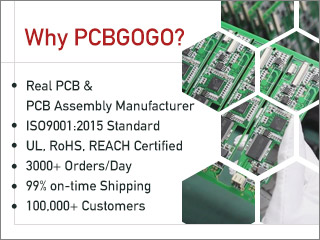Advanced Materials Behind High-Performance PCBs
In today’s fast-paced electronics landscape, devices like 5G stations, wearable gadgets, and aerospace systems demand far more than basic circuitry. Beneath these technologies lie unsung heroes—specialized materials and surface processes that quietly transform a standard pcb prototype into a robust, high-functioning platform.
Rethinking the Core: Performance-Driven Substrates
1. Speed Matters: PTFE in High-Frequency Applications
Polytetrafluoroethylene (PTFE) materials are at the heart of high-speed, high-frequency systems. With dielectric constants as low as 2.0–2.2 and minimal signal loss, they enable near-instant data transmission for server boards and optical transceivers. Hybrid variants—combining PTFE with ceramic fillers—deliver improved heat dissipation, crucial for intensive computing environments.
2. Thermal Stability in Harsh Conditions
In automotive or industrial scenarios where heat regularly exceeds 150°C, conventional substrates degrade quickly. High-Tg epoxy laminates, with glass transition temperatures over 170°C, ensure dimensional stability and electrical integrity. These materials serve reliably in power control and vehicle safety systems.
3. Flexibility in Wearables and Aerospace
Polyimide (PI) substrates give rise to flexible circuit designs found in smartwatches, fitness trackers, and spacecraft. Able to operate from -200°C to 300°C, PI films offer unmatched resilience while allowing for compact, foldable designs—making them essential in applications with limited space or extreme environments.
Protective Layers: Surface Finishing Technologies
1. ENIG: Reliable Finish for Precision Electronics
Electroless nickel immersion gold (ENIG) plating offers superior oxidation resistance, excellent solderability, and stable electrical contact. Often paired with precise silk screen labeling, this finish is a go-to for high-end consumer electronics, minimizing signal loss and ensuring clean solder joints in miniaturized assemblies.
2. ENEPIG: Reinforced Performance for Automotive PCBs
Electroless nickel electroless palladium immersion gold (ENEPIG) adds an extra palladium layer, improving corrosion resistance and enabling aluminum wire bonding. It’s particularly useful for applications like automotive ECUs, where both environmental stress and electrical reliability are critical.
3. OSP: A Cost-Effective Alternative
Organic solderability preservative (OSP) coatings offer a low-cost surface finish for budget-sensitive products such as chargers and toys. Though less durable in moisture-rich environments, OSP coatings are environmentally friendly and compatible with lead-free soldering processes.
Structural Materials: Built for Performance
1. Thick Copper: Power Throughput Without Overheating
High-current applications benefit from thicker copper layers—often up to 2oz or more. These PCBs reduce resistance and heat buildup in power modules for EV battery systems and industrial motors, allowing safe, efficient energy transfer.
2. Embedded Passives: Saving Space, Improving Signal Integrity
Embedding capacitive and resistive materials directly into the PCB structure helps reduce surface clutter and enhance miniaturization. This is vital for compact devices like wearables, where space is a premium and performance is non-negotiable.
3. Blind and Buried Vias: Supporting High-Density Layouts
Advanced drilling techniques and resin-filled vias allow for greater component density without compromising signal reliability. These technologies are particularly important in foldable phones and compact computing devices, where internal real estate is limited.
Challenges and Opportunities Ahead
While specialized materials unlock higher performance, they introduce challenges in cost and fabrication. PTFE-based materials, for instance, demand precise processing and advanced equipment, limiting their use in cost-sensitive segments. Similarly, managing thermal profiles and lamination cycles when using high-Tg or flexible substrates requires strict process control.
Still, manufacturers like PCBGOGO are bridging this gap by offering expert engineering support and efficient pcb prototype production. By combining high-performance materials, tailored silk screen labeling, and compatibility with modern pcb file viewer workflows, they help customers meet both technical and commercial demands.
Need expert support with high-performance PCB solutions?
Contact PCBGOGO to turn your ideas into reliable, production-ready boards.


